Are you wondering how to choose the best window for your remodel or replacement project? Wondering whether you should go with a single-hung or a double-hung, a casement window or a slider?
We've got you covered. In this article, you'll learn about the 15 most common types of windows, including single-hung, double-hung, casement, and more. From the classic charm of bay and bow windows to the sleek functionality of sliding windows, we’ll break down what makes each style distinct and ideal for different spaces in your home.
Single-Hung Windows
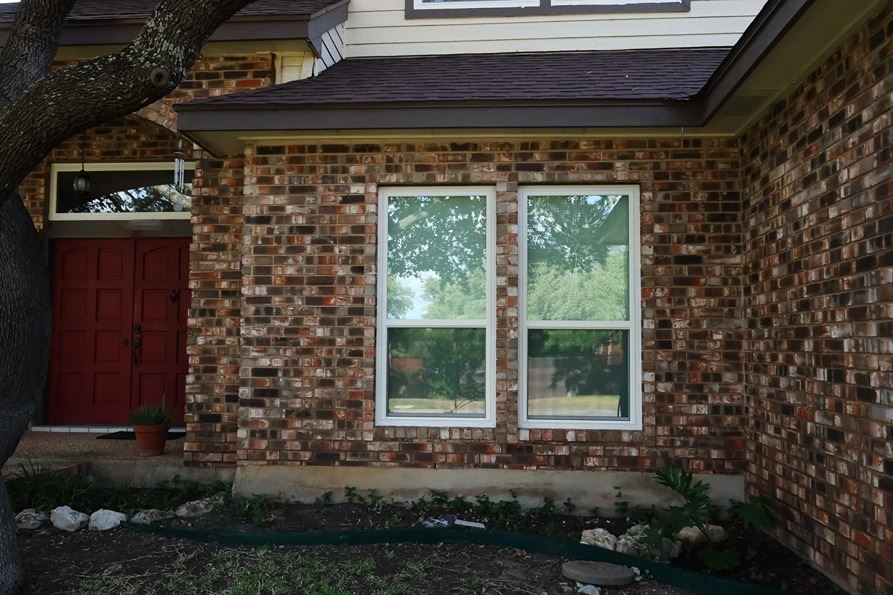
Single-hung windows have a stationary upper sash and a movable lower sash. The lower sash slides up and down to open and close, while the upper sash is fixed. This classic operation makes them a familiar fixture in many homes.
Best Places Single-Hung Windows
Single-hung windows are ideally suited for:
- Areas Where A Limited Opening is Sufficient: Since single-hung windows don’t open all the way, they’re a good choice for areas where air-flow isn’t your biggest concern, like stairwells or closets.
- Anywhere...If You’re On A Budget: Since single-hung windows look just like double-hung but are less expensive, they’re a great choice for any room if you’re on a tight budget and don’t need a movable upper sash.
- Ground Floors: Because the upper sash is fixed, it can be difficult to clean the outside of the window. This makes single-hung windows better for ground floors where you can clean and service them from outside without using a ladder.
- Traditional Aesthetics: Single-hung windows are perfect for historic homes or traditional-style new construction where you want a classic look.
Pros & Cons of Single-Hung Windows
| Pros | Cons |
| Cost-Effective: Single-hung windows are less expensive compared to other window types, making them a suitable option for those on a tight budget. | Limited Ventilation: Since only the bottom sash opens, single-hung windows do not offer as much ventilation as double-hung windows. |
| Energy-Efficient: With only one movable sash, these windows are less prone to air leakage compared to windows with multiple movable sashes, such as double-hung or casement windows. | Cleaning Difficulty: Cleaning the exterior of the fixed upper sash from inside can be challenging, particularly for windows on higher floors. This may necessitate the use of a ladder or hiring a professional window cleaner periodically. |
| Simple Design: The straightforward design facilitates easier installation and maintenance. Fewer moving parts mean fewer parts are likely to break. |
Double-Hung Windows
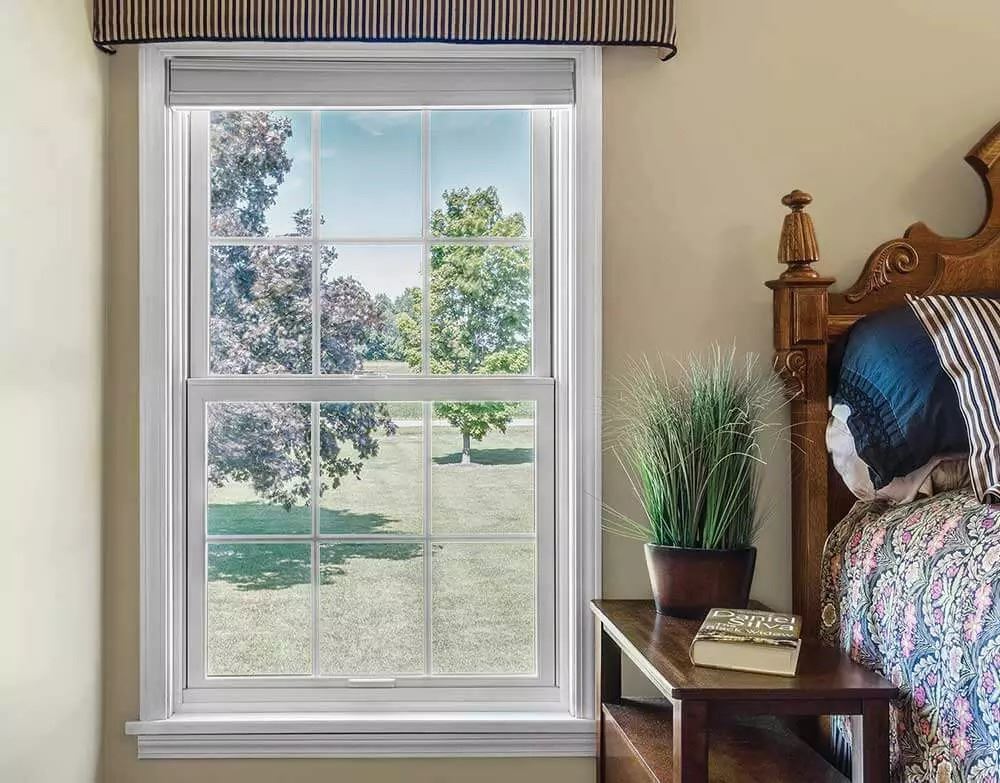
Double-hung windows are among the most popular and versatile window styles available. They look just like single hung windows but have two vertically movable sashes instead of one. This feature is particularly useful for:
- Improving airflow in your home, as warm air exits through the top while cool air enters through the bottom.
- Keeping your children safe, as the top sash can be opened while the lower sash is closed.
Check out our related article: Double Hung vs. Single Hung Windows.
Pros & Cons of Double-Hung Windows
Double-hung windows are great for enhancing airflow in rooms like kitchens and bathrooms, and their tilt-in design allows for easy cleaning from inside the home without ladders. However, they are typically more expensive than single-hung windows, and might leak air as they age due to weakening seals.
| Pros | Cons |
| Airflow: Good for rooms needing extra ventilation, like kitchens or bathrooms. | Higher Cost: More expensive than single-hung windows. |
| Ease of Cleaning: Both sashes have a tilt-in mechanism, allowing easy cleaning of both the inside and outside from inside your home—no need for ladders. | Air Leakage: Might leak more air than single-hung windows, especially as they age and the seals between the sashes weaken. |
| Versatile Design: Fit well with almost any architectural style, from classic to contemporary, making them a universally appealing choice. |
Casement Windows
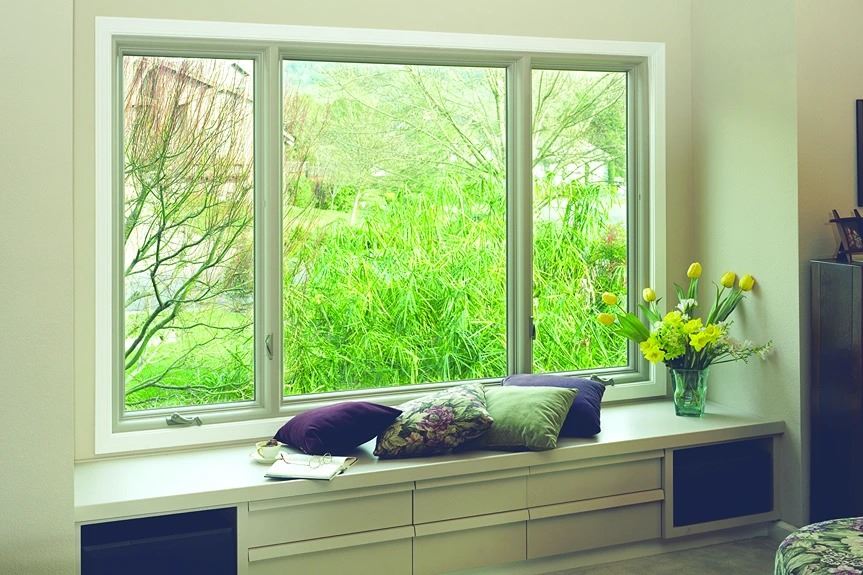
Casement windows swing open like a door and are usually opened with a hand-crank, lever, or cam handle. Casement windows give you a clear, unobstructed view since they don’t have a rail or stile in the middle. This is another great choice for airflow and elegant style.
Best Places for Casement Windows
Casement windows are particularly well-suited for several areas in your home:
- Kitchens and Bathrooms: These areas benefit from casement windows' ability to expel odors and humidity due to their full opening capability.
- Hard to Reach Areas: Since they operate with a crank, casement windows are ideal for places where reaching to open a window is difficult, such as over sinks, countertops, or appliances.
- Rooms Requiring Good Ventilation or Views: Does your bedroom or living room face a garden or a scenic view? A casement window is an elegant way to take advantage of it.
Check out our related article comparing casement windows with double-hung.
Pros & Cons of Casement Windows
Casement windows are excellent for ventilation and creating cross-breezes in your home, and they seal tightly when closed to enhance energy efficiency. They also offer unobstructed views, making them ideal for scenic locations. However, they require space to operate, which can be a problem near sidewalks or in tight areas, and their crank mechanisms can wear out over time if not properly maintained.
| Pros | Cons |
| Excellent Ventilation: Great for moving air in and out of your home, allowing for strategic placement to create cross-breezes. | Space Constraints: Require clear space outside to operate, making them less suitable near sidewalks or in tightly spaced areas. |
| Energy Efficiency: When closed, the sash creates a tight seal with the frame, minimizing air leakage. | Mechanical Complexity: Crank mechanisms can wear out over time, especially if not maintained properly. |
| Unobstructed Views: With no dividers or rails, these windows provide clear views, ideal for scenic locations. |
Sliding Windows
-window.2503311332550.jpg)
Sliding windows, also known as glider windows, have one or more panels that move side-to-side along a track. In most designs, at least one pane slides while the other is fixed, although some types allow both panes to move. This design maximizes glass area and eliminates the need for clearance space.
Best Places for Sliding Windows
Sliding windows’ ease of use and minimalist design make them a popular choice for contemporary homes. Typical placements for sliding windows include:
- Rooms facing walkways or patios: They won’t obstruct exterior spaces, unlike casement windows that swing out.
- Basements: Rooms with tight spaces often benefit from sliding windows.
- Bedrooms and living rooms: Large sliding windows can give you expansive views and make a room much more spacious and bright.
Pros & Cons of Sliding Windows
Upsides of sliding windows include their ease of use, efficient use of space, and wide views; while downsides include limited ventilation, difficulty cleaning the outside of the fixed panels, and potential sealing inefficiencies.
| Pros | Cons |
| Ease of Use: Sliding windows are easy to open and accessible for all ages, with fewer mechanical problems due to simple design. | Ventilation Limitation: Usually only allows for half of the window area to be open at a time, so they're not ideal if you want the entire space for airflow. |
| Space Efficiency: Do not open outward, making them ideal for locations next to high-traffic areas without obstructing walkways. | Cleaning Difficulties: Exterior of fixed panels can be challenging to clean from inside, especially on upper floors. |
| Large Views: Wide, unobstructed panes of glass provide extensive views and lots of natural light. | Sealing Inefficiencies: Generally have more air leakage compared to casement or double-hung windows due to the less tight seal. |
Awning Windows
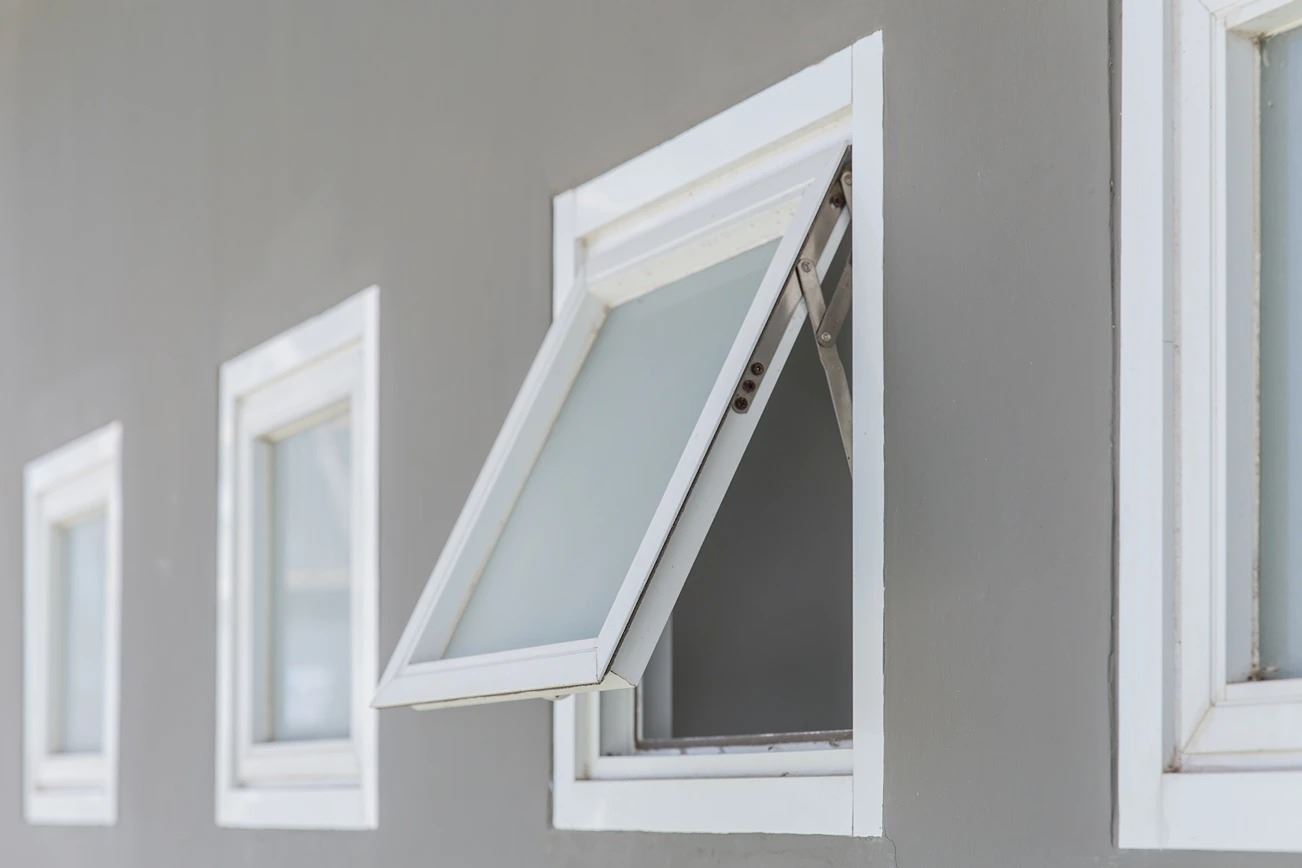
Awning windows are hinged at the top and open outward from the bottom, using a crank, handle, or lever. This allows the window to act as an awning when opened, hence the name.
Best Places for Awning Windows
Awning windows are particularly suitable for:
- Bathrooms and Kitchens: When placed high on the wall, awning windows allow for natural light and airflow without compromising space or privacy.
- Basements: Often installed above ground level in basements, awning windows can offer light and air flow without the security risks associated with easily accessible windows.
- Rainy Climates: If you're in a region with high rainfall, awning windows can ensure continuous airflow without water ingress during storms.
Check out our related article on awning windows vs casement windows.
Pros & Cons of Awning Windows
Awning windows provide weather protection and versatility in placement, but they can pose challenges with obstructing walkways, size limitations, and cleaning difficulties.
| Pros | Cons |
| Weather-Protection: Offer ventilation and light while protecting from the weather, allowing them to remain open in rain. | Obstruction Issues: They open outward, potentially blocking walkways, decks, and other areas. |
| Versatility in Placement: Ideal for a variety of placements, especially in hard-to-reach areas, operated by a handle. | Limited Size: Often smaller than other types of windows, which might limit their use in larger openings. |
| Cleaning Challenges: Cleaning the exterior from inside the house can be difficult, especially if installed higher up on a wall. |
Bay and Bow Windows
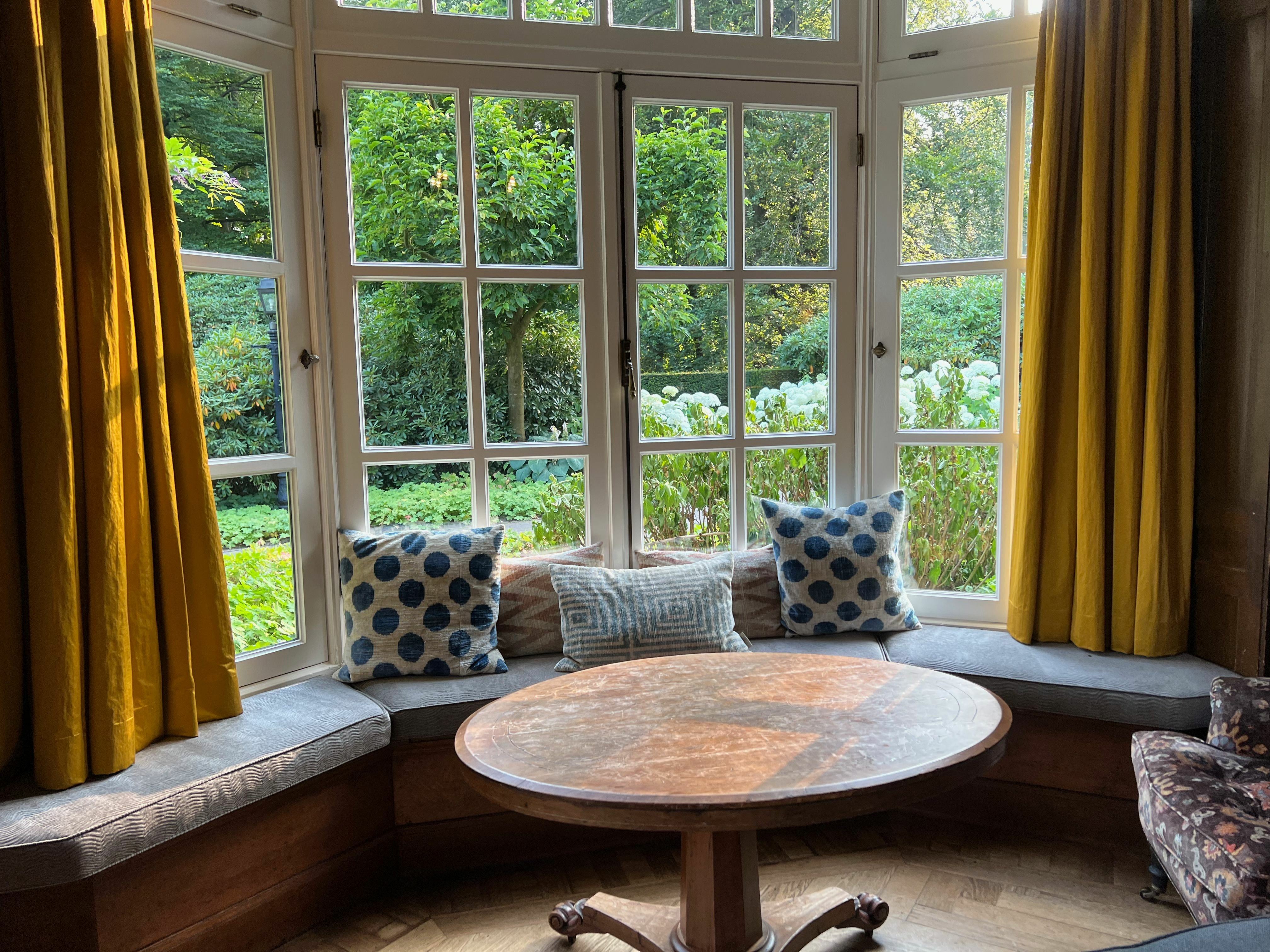
Bay and bow windows are similar in that both extend outward from the wall of a home, giving you a panoramic view and bringing in natural light. But they have distinct differences:
- Bay Windows: Typically, a bay window has three openings, set at angles. A central window is usually fixed, flanked by windows set at 30, 45, or 90 degrees to the wall, which can be openable or fixed.
- Bow Windows: A bow window consists of four or more windows that arc outward in a gentle curve. Unlike bay windows, bow windows are usually made up of windows of similar size, creating a rounded appearance.
Best Places to Put Bay and Bow Windows
Living Rooms
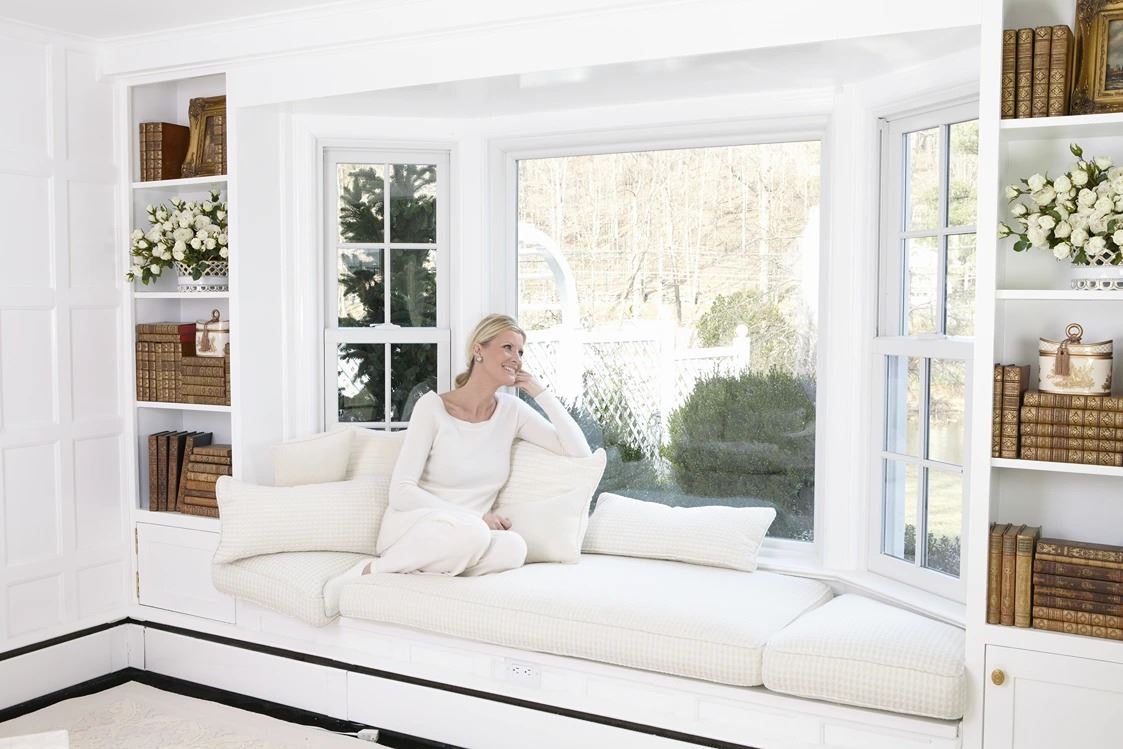
One of the most popular placements for bay and bow windows is in the living room. These windows can make an ordinary living room a vibrant and comforting sanctuary, filled with light, great views of the outdoors, and a space to relax and read a book or enjoy a morning cup of coffee.
Kitchens
Incorporating bay or bow windows in the kitchen can transform the space dramatically. Placing them above the sink and you have a pleasant view while doing dishes or making dinner. If the window is large enough, it can house a warm and welcoming breakfast nook, perfect for family meals surrounded by natural light.
Master Bedrooms
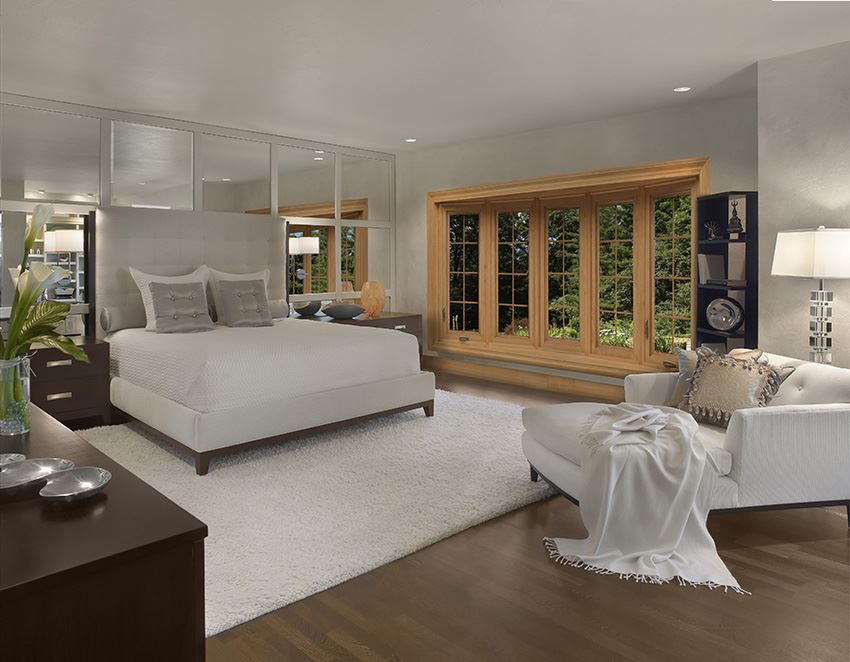
A bay or bow window in a master bedroom can create a luxurious retreat. Place it on the right side of the house and have the sunrise greet you upon waking. It can also be a great place to relax before bed or an intimate space to enjoy private moments.
Dining Rooms
Bay and bow windows can be a great choice for dining rooms as well. The natural light and added space give the room an open, airy feel, which can be enhanced further by the aesthetic of the window’s design, be it traditional or modern.
Home Offices
Bay and bow windows can make a home office more inviting and comfortable. If you spend the day buried in a computer screen, the natural light and outdoor views can bring you back to the natural world and help you relax during a stressful workday. The alcove created by the windows can also be used for additional storage or as a showcase for decorative items, plants, or books.
Tips on Decorating and Using the Space Around Bay and Bow Windows
The nook created by a bay or bow window gives you so many opportunities to make the space more than just a window. Don't miss out on the possibilities!
- Seating: Add a built-in bench to create a comfortable place to relax and enjoy the view. Add cushions and throws to match the room’s decor.
- Storage: Add drawers or cabinets for additional storage.
- Shelving: Floating shelves or built-in bookcases around the windows can provide space for books, photos, and other decorative items.
- Window Dressings: Use curtains, blinds, or shades to control light and add privacy. These can also contribute to the room's overall design theme.
- Plants: Add a touch of nature to the room. The ample light provided by bay and bow windows makes them ideal for growing plants.
Pros & Cons of Bay and Bow Windows
While bay and bow windows are a beautiful addition to a home, they're not without downsides. While they can enhance your space and bring in natural light, they are expensive and may need additional structural support.
| Pros | Cons |
| They're Beautiful: Dramatically enhance the beauty of your home. | Cost: Generally more expensive than other window types due to size and installation complexity. |
| Enhanced Space: Create additional space for seating, storage, or displays. | Maintenance: Design can make cleaning difficult, especially exteriors on upper floors. |
| Increased Light and Views: Multi-window design allows light from multiple directions, and the extended structure offers sweeping views, making rooms feel larger and more inviting. | Structural Requirements: May need additional structural support, adding to installation complexity and cost. |
| Architectural Interest: Adds unique design elements to the exterior, which drives up curb appeal and can increase your property value. | |
| Versatility: Suitable for many architectural styles, from traditional to contemporary. |
Picture Windows
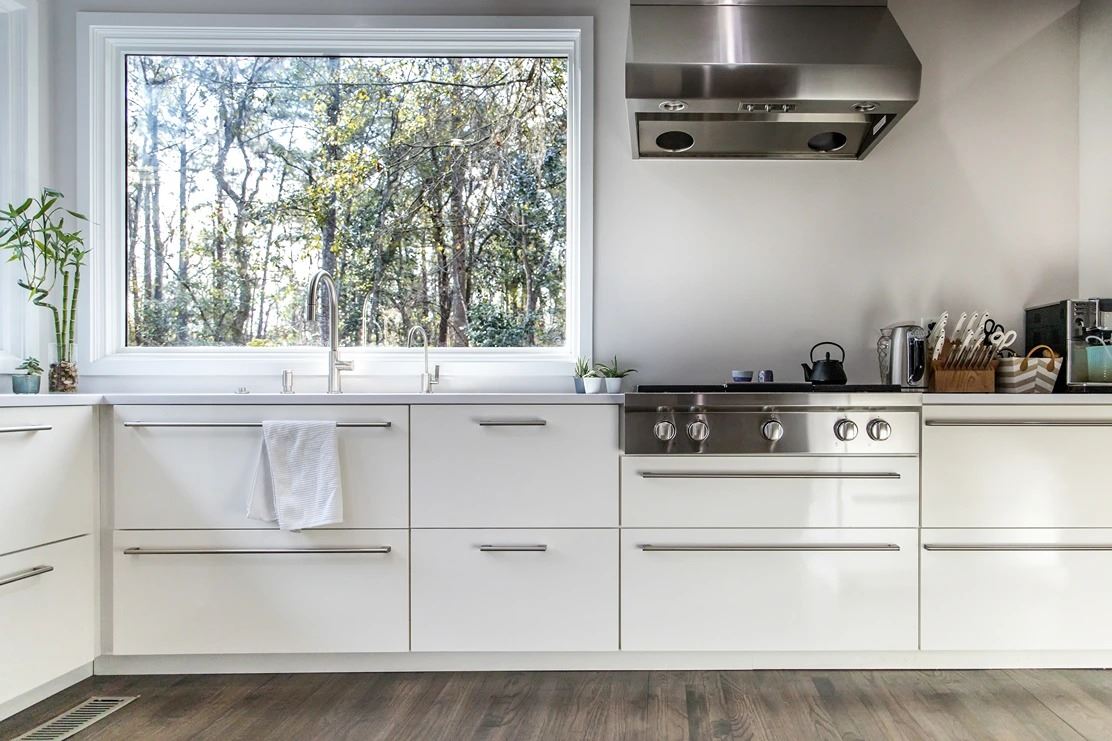
Picture windows are large, fixed panes of glass that do not open or close. Designed to provide a clear, unobstructed view of the outside, they are named for their ability to frame the outside scenery like a picture frame. These windows are all about maximizing light and capturing beautiful views.
Best Places for Picture Windows
Picture windows are best for rooms where the focus is on capturing beautiful views or where you're not concerned with privacy:
- Living Rooms: A picture window in a living room can act as the centerpiece of the room, offering views and flooding the room with natural light.
- Dining Areas: Installing a picture window near a dining area can make meals more pleasant, with views and natural light.
- Hallways or Staircases: Spaces that might otherwise be dark or closed off can benefit from a picture window, transforming the space with light and depth.
- Modern Home Offices: A picture window can provide a serene backdrop for your home office.
Pros & Cons of Picture Windows
Picture windows are great for opening up spaces and providing picture-perfect views of the outdoors. They are also low-maintenance and energy efficient. However, they don't open, so of course they aren't going to work for ventilation and aren't suitable where emergency exits are necessary. Plus, cleaning them can be tricky if they're high up or oversized.
| Pros | Cons |
| Beauty: Offer a modern, sleek look that enhances both the interior and exterior design of a home. | Lack of Ventilation: Do not open, which can be a disadvantage in areas needing airflow. |
| Natural Light: Allow more sunlight to enter, making rooms feel larger and more open and reducing the need for artificial lighting. | Emergency Egress: Not suitable for areas where emergency exits are required because they do not open. |
| Views: The expansive glass acts as a canvas, displaying outdoor scenery, especially valuable in homes with picturesque surroundings. | Cleaning Challenges: Can be challenging to clean on the outside, especially if high off the ground or oversized. |
| Energy Efficiency: Very energy efficient since they don't open. High-quality glazing options can further minimize heat gain and loss. | |
| Low Maintenance: Without mechanical parts or openings, require less maintenance than operable windows and do not accumulate dirt and debris in the tracks. |
Skylight Windows
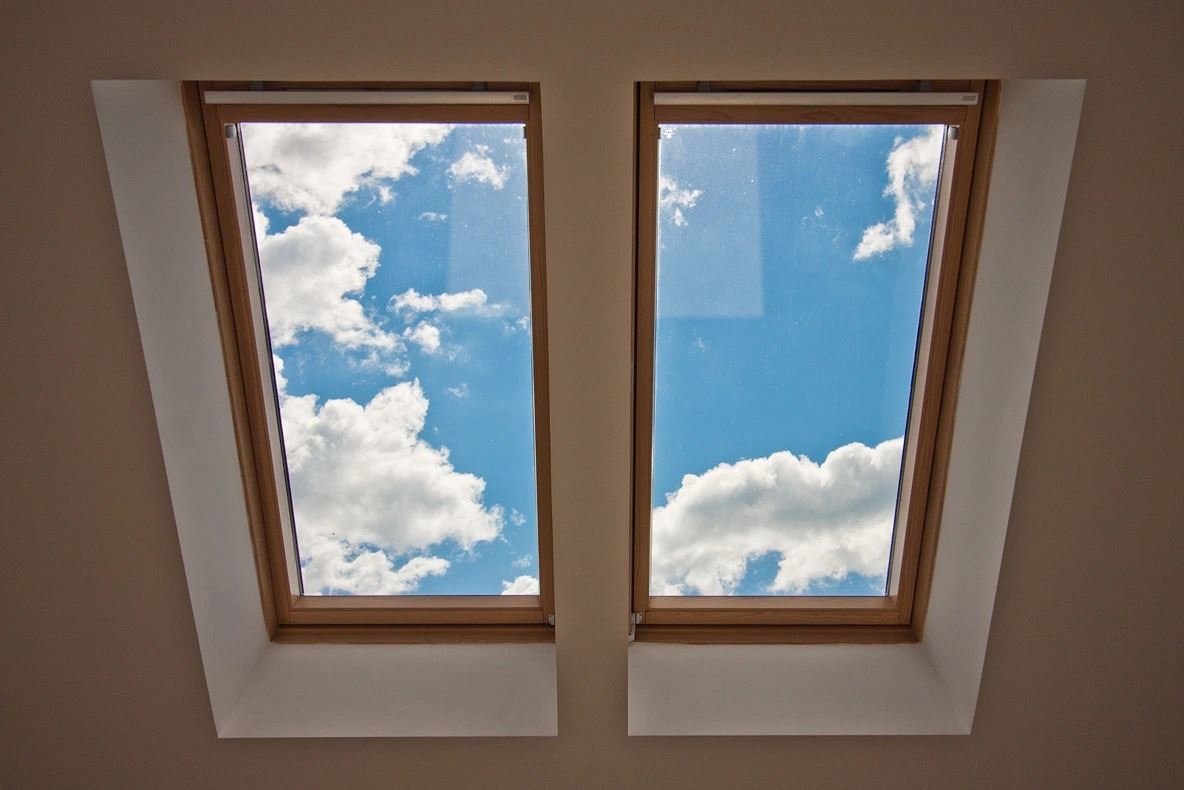
Skylight windows are installed in the ceiling of a home and give you a direct line of sight to the sky above. These unique windows are designed to bring in natural light from above, making them an excellent option for areas where side windows are not feasible. Skylights can vary in shape and size, ranging from small circular windows to large, rectangular installations. They can be fixed or operable, with the latter allowing for ventilation as well as light.
Where to Place Skylight Windows in Your Home
- Bathrooms: Skylights are perfect for bathrooms as they provide natural light while maintaining privacy. They can help ventilate the space naturally if openable.
- Kitchens: In kitchens, skylights not only enhance the natural light but can also help vent out cooking odors and heat.
- Hallways and Staircases: These often darker areas of the home can benefit greatly from the additional light provided by a skylight.
- Living Rooms: Skylights can add a dramatic element to living room spaces, especially if you're home has high ceilings.
Pros & Cons of Skylight Windows
Skylights brighten rooms with more natural light, reduce your electricity costs by cutting down on artificial lighting, and can improve air quality through ventilation. But they may also be less energy-efficient, have higher installation costs, and suffer increased maintenance and leakage concerns due to their placement on the ceiling.
| Pros | Cons |
| Improved Natural Light: Increase the amount of natural light in rooms, especially those without external walls, significantly brightening spaces. | Heat Gain and Loss: Can lead to significant heat loss in winter and overheating in summer if not properly installed with energy-efficient glazing. |
| Energy Efficiency: By providing more natural light, skylights can reduce the need for artificial lighting during the day, potentially lowering electricity costs. | Maintenance: Difficult to clean and maintain due to their location; more exposed to the elements, which may lead to leaks. |
| Ventilation: Operable skylights can enhance air circulation, bringing fresh air into the home and improving indoor air quality. | Installation Cost: Higher than other types of windows due to the complexity of installation and necessary structural considerations. |
Transom Windows
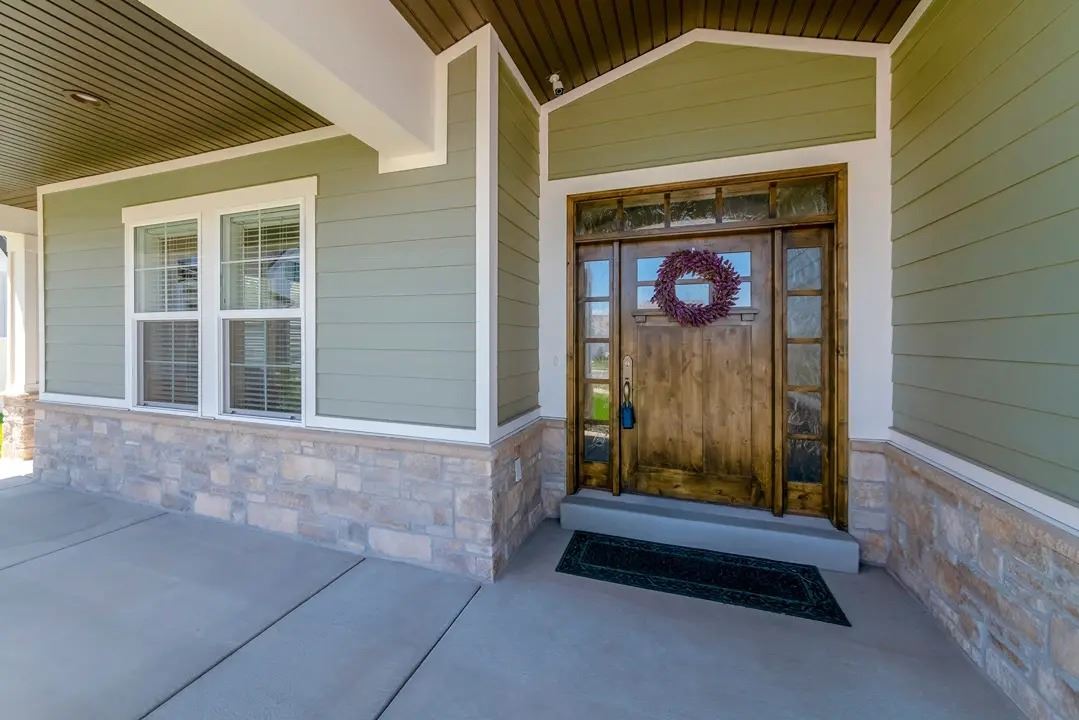
Transom windows are small, decorative windows typically located above a door or larger window, used historically in both residential and commercial architecture. They are set into the transom bar, which separates the top of the door or window from the window above it. Originally designed for both aesthetics and practicality, transom windows can be either operational (able to open) or fixed (non-opening).
Transom windows are very versatile, serving several purposes:
- Natural Light: They allow additional light to enter a space, brightening areas that might otherwise rely on artificial lighting.
- Ventilation: When operable, transom windows can help improve air circulation in a room, allowing warm air to escape while drawing in cooler air from lower openings.
- Architectural Detail: Transom windows add a touch of classic charm and character to a building’s façade, enhancing the architectural design without overwhelming it.
Best Places for Transom Windows in Your Home
Transom windows are particularly effective in several specific areas within a home:
- Entryways: Placed above front doors, they can improve the entrance’s appearance while providing a glimpse of the style within.
- Bathrooms: Above doorways or privacy walls within bathrooms, they offer extra light while maintaining privacy.
- Kitchens: Over cabinets or doors in a kitchen, transom windows can add light to areas that might otherwise be shadowed.
Incorporating transom windows offer a historical nod with modern utility, improving light, enhancing style, and, when operational, increasing airflow—all while fitting into spaces that traditional windows might not.
Pros & Cons of Transom Windows
While transom windows boost natural light and ventilation, they can be hard to access and clean, especially in high placements, and can be a source of energy loss if not properly insulated.
| Pros | Cons |
| Enhanced Light and Ventilation: Even in small spaces, transom windows can increase natural light and improve airflow. | - Limited Accessibility: If operational, transom windows can be difficult to reach due to their high placement, requiring special tools. |
| - Space Efficiency: Placed high on a wall, they don’t take up usable wall space, making them ideal for smaller rooms or walls filled with other features. | - Cleaning and Maintenance: Challenging to clean and maintain, especially if situated in rooms with high ceilings. |
| - Privacy: Provide light and ventilation in privacy-sensitive areas such as bathrooms and bedrooms without compromising security or exposure. | - Thermal Efficiency: Can be a source of energy loss, especially if not well-insulated or if made with single-pane glass. |
Floor to Ceiling Windows
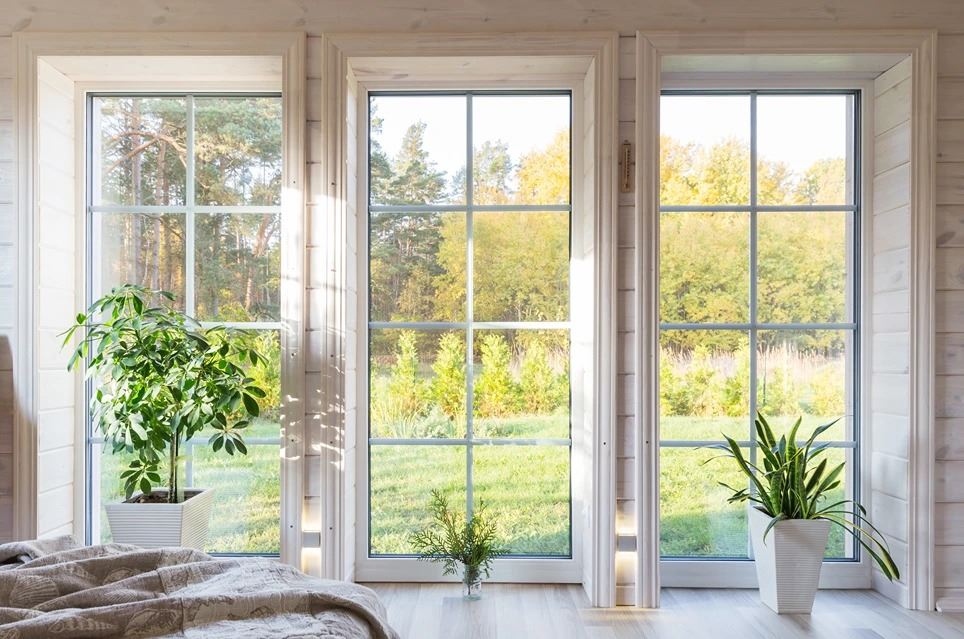
Floor to ceiling windows, also known as full-height windows, span from the floor to the ceiling, providing an unobstructed view of the outside and a vast amount of natural light. These windows are typically large and can even cover entire walls, turning the wall itself into a window. The architectural design of floor to ceiling windows often features minimal frames to maximize the glass area, enhancing the modern aesthetic and the seamless integration of indoor and outdoor spaces.
Best Places for Floor to Ceiling Windows in Your Home
- Living Rooms and Great Rooms: Utilizing floor to ceiling windows in living spaces where families gather can transform the area, making it feel more spacious and connected to the outdoors. This setup is ideal for homes that boast impressive views, whether it’s a city skyline, ocean, mountains, or lush gardens.
- Master Bedrooms: Incorporating floor to ceiling windows in a master bedroom can turn the space into a serene retreat. Waking up to a full view of a beautiful sunrise or tranquil scenery can significantly enhance the quality of life.
- Sunrooms and Conservatories: These areas benefit greatly from the extensive natural light and panoramic views provided by floor to ceiling windows, creating a seamless bridge between indoor comforts and the beauty of the outdoor environment.
- Kitchens with Views: In homes where the kitchen acts as a central hub, floor to ceiling windows can open up the space to scenic views, making cooking and dining experiences more enjoyable.
- Dining Areas: Floor to ceiling windows in dining areas can create an ambiance that enhances the dining experience, making every meal feel like a special occasion.
When considering floor to ceiling windows, it’s important to balance aesthetics with functionality. Choosing the right type of energy-efficient glass and considering window treatments for privacy and sun control are essential steps in maximizing the benefits while mitigating the drawbacks. With careful planning, floor to ceiling windows can be a stunning addition to any home, bringing the outdoors in and adding a touch of elegance and modernity to the living space.
Pros & Cons of Floor to Ceiling Windows
Large windows maximize natural light, enhancing views and adding a modern, luxurious touch to homes. However, they can lead to energy inefficiencies, compromise privacy without proper treatments, and are costly and maintenance-intensive due to their size and cleaning requirements.
| Pros | Cons |
| Maximized Natural Light: Extensive glass area allows for an abundance of natural light, making rooms appear larger and more open. | Energy Efficiency: Large expanses of glass can lead to energy losses, especially if not using high-quality, energy-efficient glass, increasing costs. |
| Enhanced Views: Offer panoramic views of the surroundings, excellent for homes with picturesque landscapes or cityscapes. | Privacy: Can compromise privacy, particularly in urban settings or crowded neighborhoods, unless adequate window treatments are used. |
| Aesthetic Appeal: Add a dramatic touch to any architectural design, providing a sense of luxury and modernity, potentially increasing home’s market value. | Cost and Maintenance: More expensive to install than standard windows and require diligent maintenance, including regular cleaning of large glass surfaces. |
Glass Block Windows
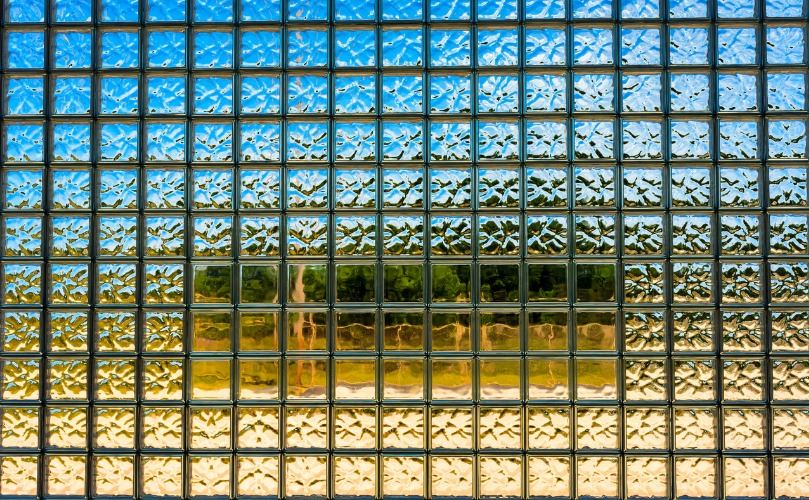
Glass block windows consist of individual glass blocks sealed together to form a window that is both decorative and functional. These blocks are typically frosted or patterned, providing privacy while still allowing light to pass through. Originally popular in mid-20th-century architecture, glass block windows are often used in bathrooms, basements, and other areas where privacy and security are priorities.
Glass block windows serve multiple functions:
- Privacy: The textured or frosted surface of glass blocks makes it difficult to see through, offering excellent privacy without the need for additional window treatments.
- Light Diffusion: While they obscure visibility, glass block windows allow natural light to filter through, illuminating a space without glare.
- Unique Design Element: The distinctive appearance of glass block windows can contribute a stylistic, modernist touch to a building’s design, acting as both a light source and a decorative feature.
Best Places for Glass Block Windows in Your Home
Glass block windows are especially useful in specific applications around the home:
- Bathrooms: Ideal for shower areas or bathroom walls where privacy and natural light are desired simultaneously.
- Basements: In basement areas that require security and moisture resistance, glass block windows can provide light while deterring break-ins.
- Exterior Walls Facing Unattractive Views: If a wall faces a less desirable scene, such as a close neighboring house or a busy street, glass block windows can obscure the view while still letting light in.
Incorporating glass block windows into a home design offers a blend of functionality and distinctive style. They are particularly suited to enhancing privacy and security while contributing to the overall energy efficiency of the space. Their unique decorative appeal can also play a significant role in modernizing and adding character to specific areas within a home.
Pros & Cons of Glass Block Windows
Glass block windows offer enhanced security and good insulation, making them energy efficient and low-maintenance, but they also come with downsides. They do not open for ventilation, are difficult to remove once installed, and their distinct style may not suit every home's architecture.
| Pros | Cons |
| - Enhanced Security: Due to sturdy construction and thickness, glass block windows are more secure than conventional windows, making them difficult to break through. | - No Ventilation: Cannot be opened, offering no ventilation. |
| - Low Maintenance: Durable and resistant to moisture and mold, requiring little maintenance beyond occasional cleaning. | - Permanent Fixture: Once installed, they are difficult to remove or replace due to their construction and integration into the wall. |
| - Energy Efficiency: Often manufactured with a hollow center, providing good insulation properties and helping to reduce heat loss and improve energy efficiency. | - Aesthetic Limitations: The specific look may not align with every architectural style and can appear outdated in some settings. |
Arched Windows
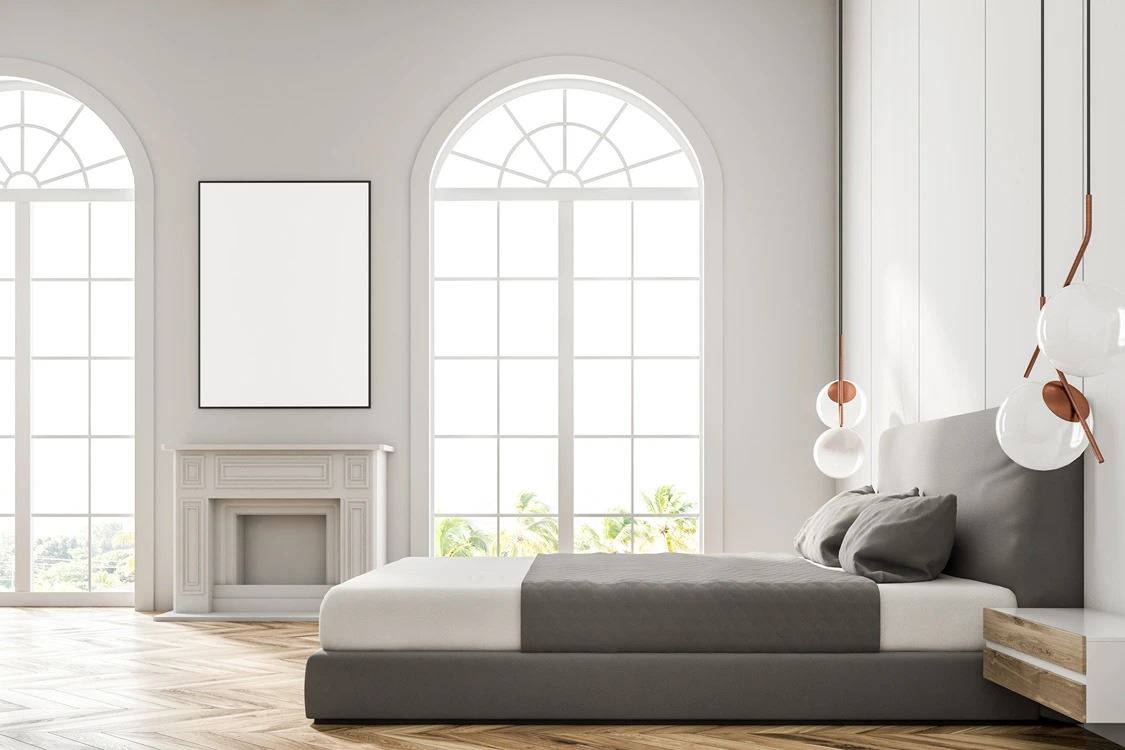
Arched windows, with their distinctive curved top, add a touch of architectural elegance to any home. Often seen in historical and custom-built houses, these windows blend the charm of old-world design with modern aesthetics. They are ideal if you're looking to add a unique architectural element into your home.
Best Places for Arched Windows
Arched windows are versatile and can elevate the beauty and functionality of many rooms in a home:
- Entryways: An arched window above the front door can make a grand statement, welcoming both light and visitors into your home.
- Living Rooms: Incorporating arched windows in living areas adds height and drama.
- Bathrooms: An arched window can be positioned above a garden tub, combining privacy with style and allowing natural light in.
Pros & Cons of Arched Windows
Arched windows enhance your home's aesthetic with their elegant shape and can be customized to fit numerous styles. However, they are more expensive to install, their unique shape may limit placement options, and finding suitable window treatments can be challenging.
| Pros | Cons |
| - Aesthetic Appeal: Arched windows add an elegant, often dramatic look to any facade, enriching both the interior and exterior design. | - Higher Cost: More expensive than standard windows due to their shape and the complexity of installation. |
| - Natural Light: The extended height allows more sunlight to penetrate, making rooms feel larger and more open. | - Limited Placement: Their unique shape might limit where they can be placed, as not all wall spaces or existing openings can accommodate an arch. |
| - Customization: Available in various sizes and styles, tailored to fit any space and complement any home design from classical to contemporary. | - Challenges in Treatment: Finding window treatments that fit can be challenging, requiring custom solutions for privacy or light control. |
| - Increased Home Value: The unique appeal can increase the architectural value and curb appeal of your home, potentially raising its market value. |
Jalousie Windows
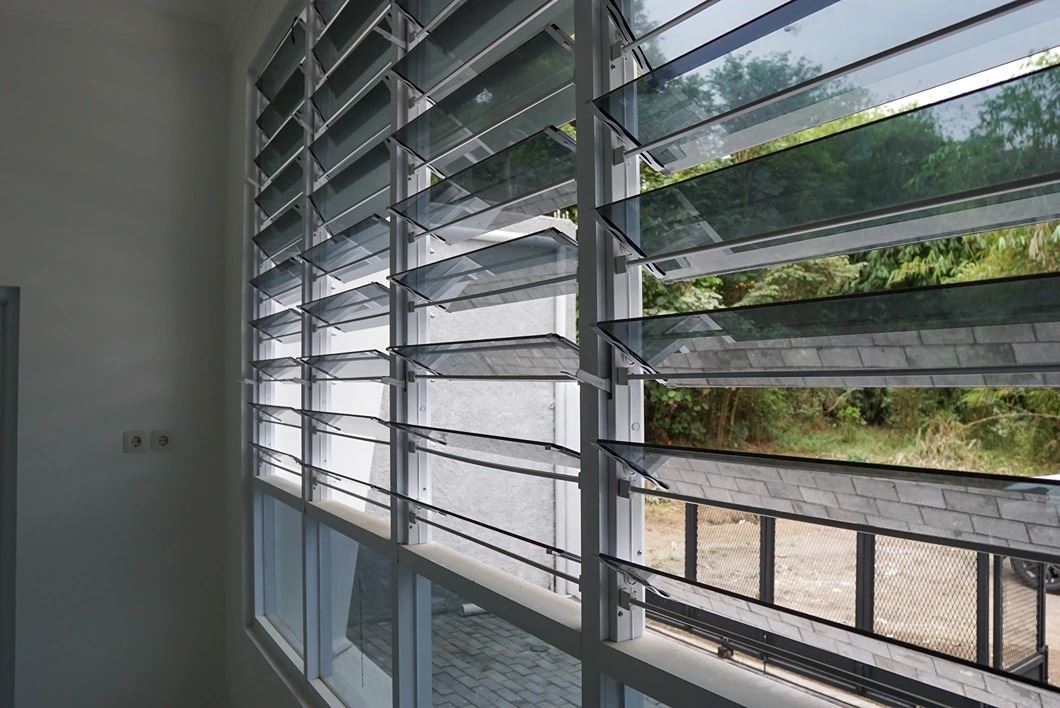
Jalousie windows, also known as louvered windows, feature horizontally placed slats that overlap one another and open in unison using a crank or lever mechanism. This design allows for excellent airflow and is particularly suited to warmer climates where maximizing ventilation is a priority. These windows are a staple in mid-century modern homes and bring a nostalgic flair to any renovation.
Best Places for Jalousie Windows
Jalousie windows are best suited for certain areas of a home where ventilation is key:
- Sunrooms: They provide adjustable ventilation while keeping the room bright and airy, ideal for sunrooms where controlling temperature and humidity is crucial.
- Bathrooms: In bathrooms, jalousie windows can prevent condensation and mold growth by providing excellent ventilation.
- Kitchens: Ideal for kitchens, these windows allow steam and cooking smells to escape quickly, helping to maintain a comfortable cooking environment.
- Porches and Patios: Enclosed porches or patios can benefit from jalousie windows, as they help to create a breezy, open atmosphere while still being sheltered from the elements.
Installing jalousie windows strategically can significantly enhance the comfort and air quality of your home, making enclosed spaces more enjoyable and breathable.
Pros & Cons of Jalousie Windows
Jalousie windows are great for ventilation and maintaining a connection with the outdoors, and are affordable and easy to use. However, they pose security risks, are not very energy-efficient, offer limited weatherproofing, and their style may be seen as outdated, potentially impacting the aesthetic appeal for prospective buyers.
| Pros | Cons |
| - Ventilation: Offer superb airflow, adjustable to let in as much or as little air as needed. | - Security: The design can be a security risk, as individual slats can be easily removed or broken. |
| - Affordability: Generally less expensive than other types of windows, making them a cost-effective option. | - Energy Efficiency: Not very energy-efficient due to gaps between slats, allowing heat to escape during colder months. |
| - Easy to Use: Simple mechanism makes them easy to open and adjust, even for larger setups. | - Limited Weatherproofing: May allow rain and outdoor elements to enter if slats are not tightly sealed. |
| - Indoor-Outdoor Connection: Help maintain a strong connection to the outdoors, ideal for homes in scenic locations. | - Outdated Style: The style may be considered dated, which could affect aesthetic appeal to potential homebuyers. |
Specialty Windows (Custom Shapes)
Specialty windows, or custom-shaped windows, refer to windows that break away from traditional rectangular forms to include shapes such as circles, arches, triangles, ellipses, and more. These windows are often used as architectural accents, adding unique character and style to a home. They can be designed to fit specific spaces where standard windows cannot be used, or to create a visual focal point in a room.
How Custom Windows Can Enhance Your Home’s Unique Architectural Features
Custom-shaped windows can play a pivotal role in defining the character and enhancing the architectural beauty of a home:
- Highlighting Architectural Styles: Whether it's a gothic arch, a circular window reminiscent of maritime architecture, or a geometrically bold modern design, custom windows can highlight and reinforce the architectural style of a home.
- Creating Visual Interest: In homes with minimalist or very straightforward architectural lines, a custom window can serve as a striking visual element that adds depth and interest to the facade.
- Optimizing Views and Light: Custom-shaped windows can be designed to frame and emphasize specific views or to capture light at particular angles, enhancing the natural lighting and views that are unique to the property's location.
- Enhancing Interior Design: Inside the home, these windows can create stunning backdrops or centerpieces for interior spaces, influencing decor and setting the mood of a room.
Pros and Cons of Specialty Windows
Custom-shaped windows boost a home's aesthetic appeal with their unique designs and increase natural light in distinctive patterns, enhancing ambiance and offering design versatility for unusual spaces or historical aesthetics. However, they tend to be pricier due to complex manufacturing, often do not open (which limits ventilation and window treatment options), and can present challenges during installation requiring precise framing and extra structural support.
| Pros | Cons |
| - Aesthetic Enhancement: Custom-shaped windows dramatically enhance the architectural beauty of a home, providing distinctive visual interest. | - Cost: Typically more expensive than standard windows due to the complexity of design and manufacturing processes. |
| - Increased Natural Light: Help increase natural light in a home, with unique shapes casting light in novel and striking patterns, enhancing the ambiance. | - Limited Functionality: Many are fixed and do not open, limiting ventilation, screening options, and the types of window treatments available. |
| - Versatility in Design: Can be made to fit unusual spaces or match historical aesthetics in renovations, offering design flexibility standard windows cannot. | - Installation Challenges: Installation can be more complex, requiring precise framing and sometimes additional structural support. |
Egress Windows
Egress windows are designed for safety and functionality, serving as an escape route in case of emergency. They are a critical feature in residential buildings, particularly in basements and sleeping areas where other exits might be limited or non-existent. These windows are not just practical; they also allow natural light and ventilation into lower levels and confined spaces.
Best Places for Egress Windows
Installing egress windows is not only a matter of personal preference but also compliance with local building codes. Here are ideal locations for egress windows:
- Bedrooms: Building codes often require egress windows in all sleeping quarters, especially in basements, to ensure a secondary escape route in case of emergencies.
- Basements: Whether finished or unfinished, basements can benefit greatly from egress windows, which make these lower spaces safer and more livable.
- Home Offices in Basements: For those converting lower levels into workspaces, adding an egress window can provide a safer and more comfortable environment.
The strategic placement of egress windows enhances both the safety and aesthetic of your home, ensuring that every room meets legal safety standards while becoming more inviting.
Window Frame Materials
Choosing the right material for your window frames is as critical as selecting the style of the window itself. Each material has its pros and cons:
Wood
Wood frames have a classic appearance that many people love. They are also great at insulating against heat and cold. But they do require more maintenance than other materials, as wood is water-permeable and can warp, rot, or suffer from insect infestation without regular maintenance.
Vinyl
Vinyl is the most popular window choice for its durability, low maintenance, and good thermal performance. Its more affordable than fiberglass and wood and does not need or treatment. Vinyl is not a premium choice though, as its susceptible to lots of expansion and contraction and is not as customizable as fiberglass and wood.
Fiberglass
Fiberglass frames are robust, maintenance-free, and have excellent thermal performance. They can mimic the appearance of wood without the associated upkeep. Fiberglass is also less prone to expansion and contraction with temperature changes, making it very energy efficient.
Composite
Composite frames are made from a combination of materials such as wood fibers and plastic polymers. They offer the aesthetic appeal of wood but are more durable and require less maintenance. They are also environmentally friendly and provide excellent thermal insulation.
Aluminum
Known for its strength and slim profile, aluminum frames allow for larger windows with thin frames, maximizing the view. While not as insulating as wood or vinyl, many aluminum frames now include thermal breaks to minimize heat loss.
Planning a Remodeling Project?
Deciding on the right types and placement of windows is an essential step in creating a vibrant, well-lit, and functional home. Whether you choose double-hung for their versatility, casement for airflow, or picture windows for picture-perfect views, the right choice can transform your home.
If you're considering a remodel, check out our comprehensive "Ultimate Home Remodeling Guide," which covers everything you need to know about upgrading your home. From practical advice on choosing windows to tips on other home improvement areas, this guide is your go-to resource for all things remodeling.

